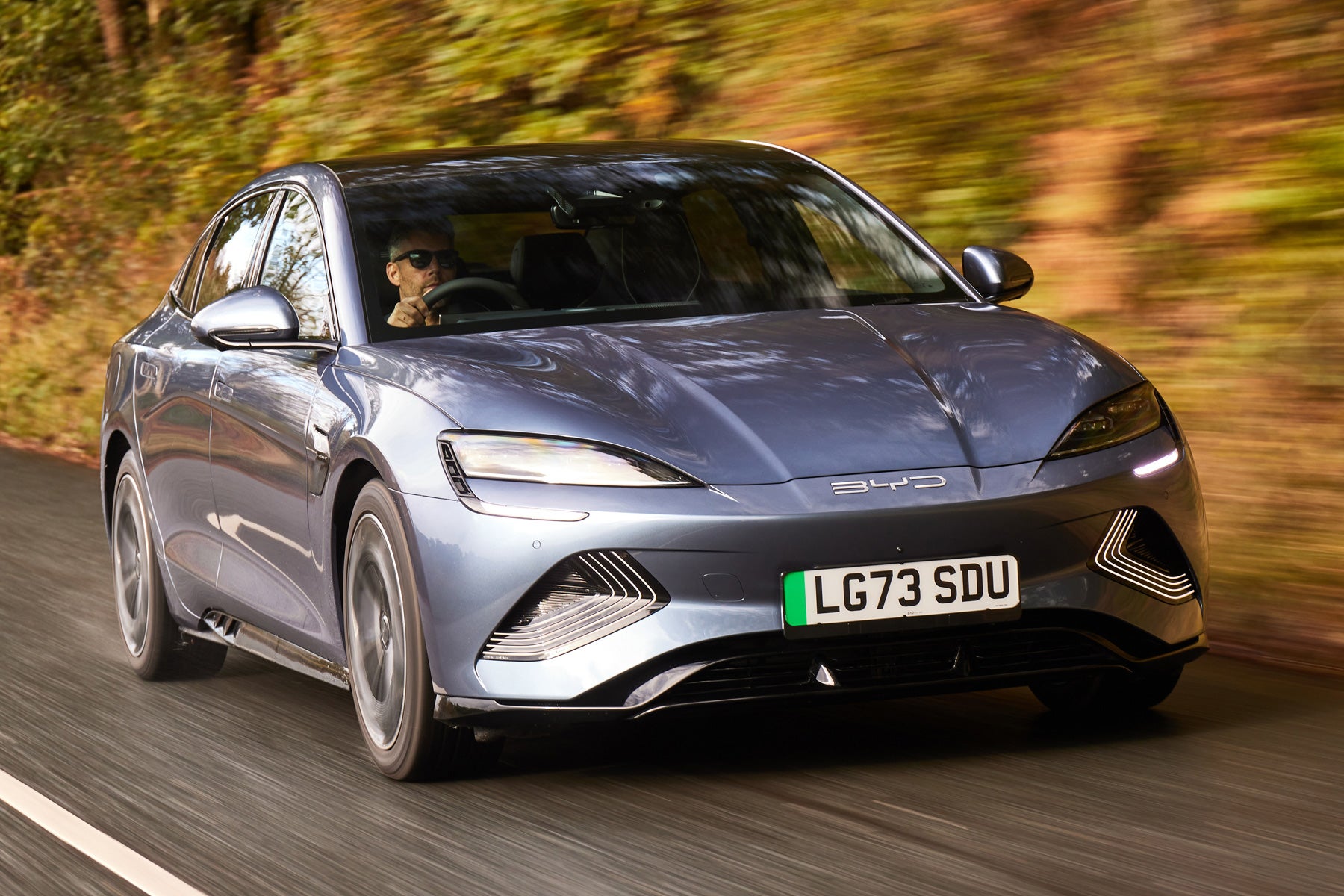BYD Seal Review 2024
Written by Andy Brady
Quick overview
Pros
- Impressive interior quality
- Very usable range of up to 354 miles
- Extensive list of standard equipment
Cons
- Good luck explaining to people what exactly it is you're driving
- It's certainly not a budget electric car
- Narrow boot opening
Overall verdict on the BYD Seal
"Probably the best electric car you've never heard of, the BYD Seal is an interesting alternative to the Tesla Model 3 and Hyundai Ioniq 6. It's great to drive, well equipped and has a superb interior... so what's the catch?"
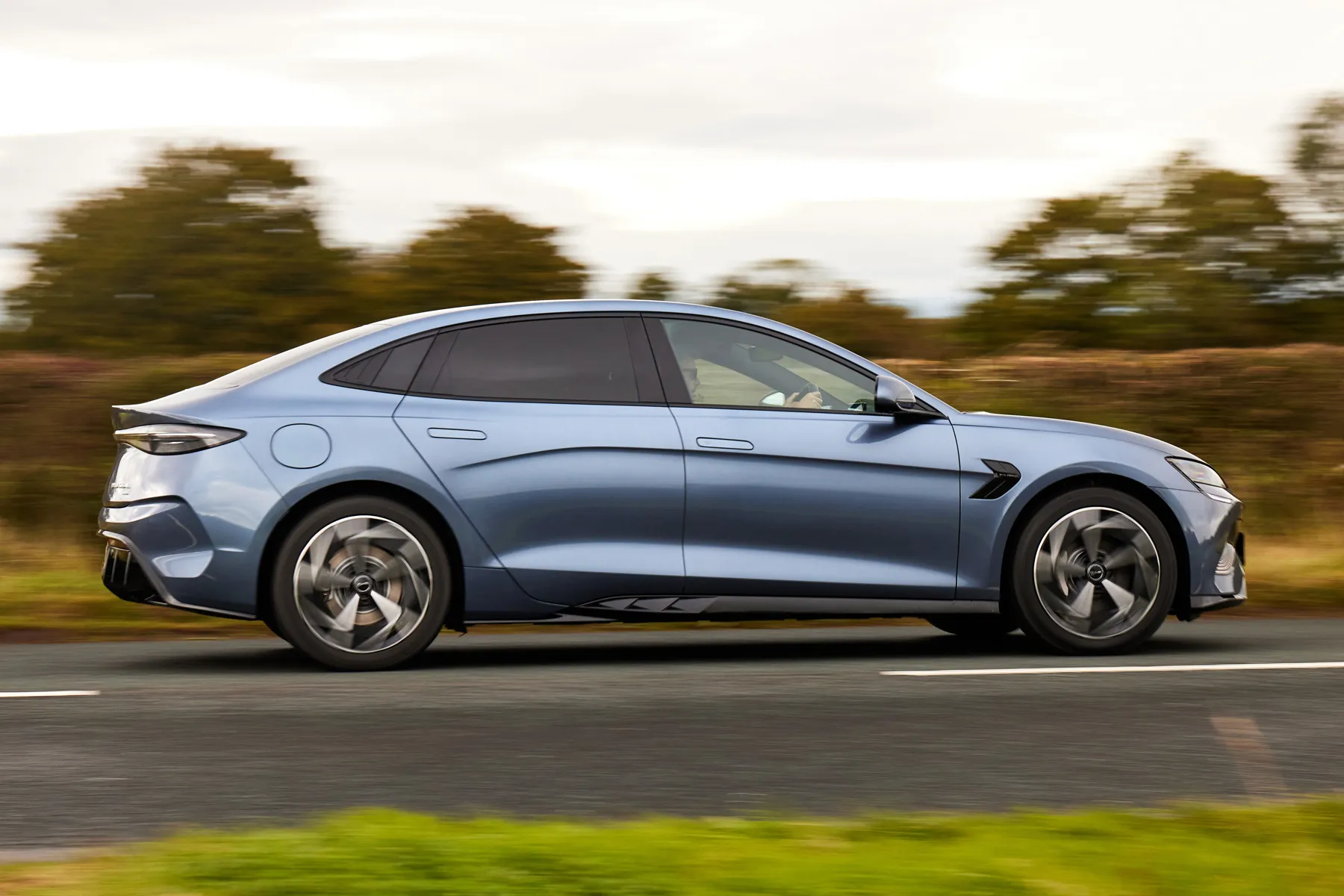
The BYD Seal is the brand's third electric car to hit the UK market in quick succession. The other cars - the BYD Atto 3 and BYD Dolphin - are perfectly respectable, but the BYD Seal manages to up the game. No longer is BYD a curious Chinese oddity - it's a serious electric car manufacturer that deserves to be considered alongside mainstream competitors.
We shouldn't expect anything less, really. While BYD might not be a familiar sight in the UK, the company is anything but a small player in the global market. It's best known for its batteries - it makes its own, with major players such as Tesla and Apple using them in everything from smartphones to cars.
So what's the BYD Seal? It's essentially an all-electric sports saloon to rival the Volkswagen ID.7 and BMW i4, as well as the aforementioned Tesla Model 3 and Hyundai Ioniq 6. There are two BYD Seal models offered in the first instance: a single-motor variant badged the BYD Seal Design; and the dual-motor BYD Seal Excellence.
Both have an electric range of more than 300 miles, while both are more than quick enough for the majority of buyers. If you really want to be shoved back in your seat, look for a BYD Seal Excellence - with a 0-62mph time of 3.8 seconds, it'll keep up with all but the fastest electric vehicles.
Pleasingly, both BYD Seals models come with a very extensive list of standard equipment. A new one might cost in excess of £45,000, but you get a huge rotating infotainment screen (we'll come on to that...), a panoramic sunroof and 19-inch alloy wheels as standard. Whether you're searching for a used electric vehicle or picking one from a company car list, this should give you a bit of reassurance that the car you get will actually look like the one in the glitzy marketing photos.
The interior is inspired by the sea, apparently, and is awash with premium finishes and impressive technology. It feels every bit the premium car - more BMW i4 than Hyundai Ioniq 6, we'd say. And it's practical, too, with enough room to use it as your main family transport (even if the small boot opening does hinder things slightly).
Not everyone will take the BYD Seal seriously (its biggest obstacle is probably its name), but you only need to look at MG to see that Chinese electric vehicle manufacturers have the potential to shake up the UK market. But with a long range, superb interior finish and lots of standard equipment, we think the BYD Seal is a surprisingly appealing choice.
Is the BYD Seal right for you?
If you're searching for a long-range electric car and are willing to look beyond the mainstream, the BYD Seal is a very good choice. Family buyers might find an electric SUV to be more practical, but the BYD Seal is otherwise a very comfortable and spacious electric vehicle.
What’s the best BYD Seal model/engine to choose?
We'll start with a caveat: both BYD Seal models are tempting propositions and we wouldn't criticise you for choosing either. That said, we reckon the entry-level BYD Seal Design is the one to go for. Not only is it slightly more affordable (only slightly...), you also get a marginally longer range and almost all of the kit of the range-topping BYD Seal Excellence. The only thing you're really missing out on is all-wheel drive and ludicriously quick acceleration - and, once the novelty factor's over, that's no great loss.
What other cars are similar to the BYD Seal?
There's one competitor that the BYD Seal is clearly aimed at: the Tesla Model 3. We don't mean that it's copied the Tesla (it very definitely takes its own unique approach); but you can see that BYD is excited by the prospect of tempting away Tesla owners. In comparison to the Model 3, the BYD Seal has a more extensive list of standard equipment as well as a more interesting (in our eyes) interior.
If a Tesla Model 3 isn't your bag, you might also want to look at the Hyundai Ioniq 6. That's a brilliant electric saloon car, although its interior is actually a little disappointing compared to the Seal's. And then there's the new Volkswagen ID.7, which is a slightly more mainstream competitor - or the premium (and very desirable) BMW i4.
Comfort and design: BYD Seal interior
"If you think the BYD Seal's exterior makes the Tesla Model 3 look dull, wait until you hop aboard its interior. The Seal's cabin is an ocean of impressive materials, while standard kit leaves rivals out at sea."
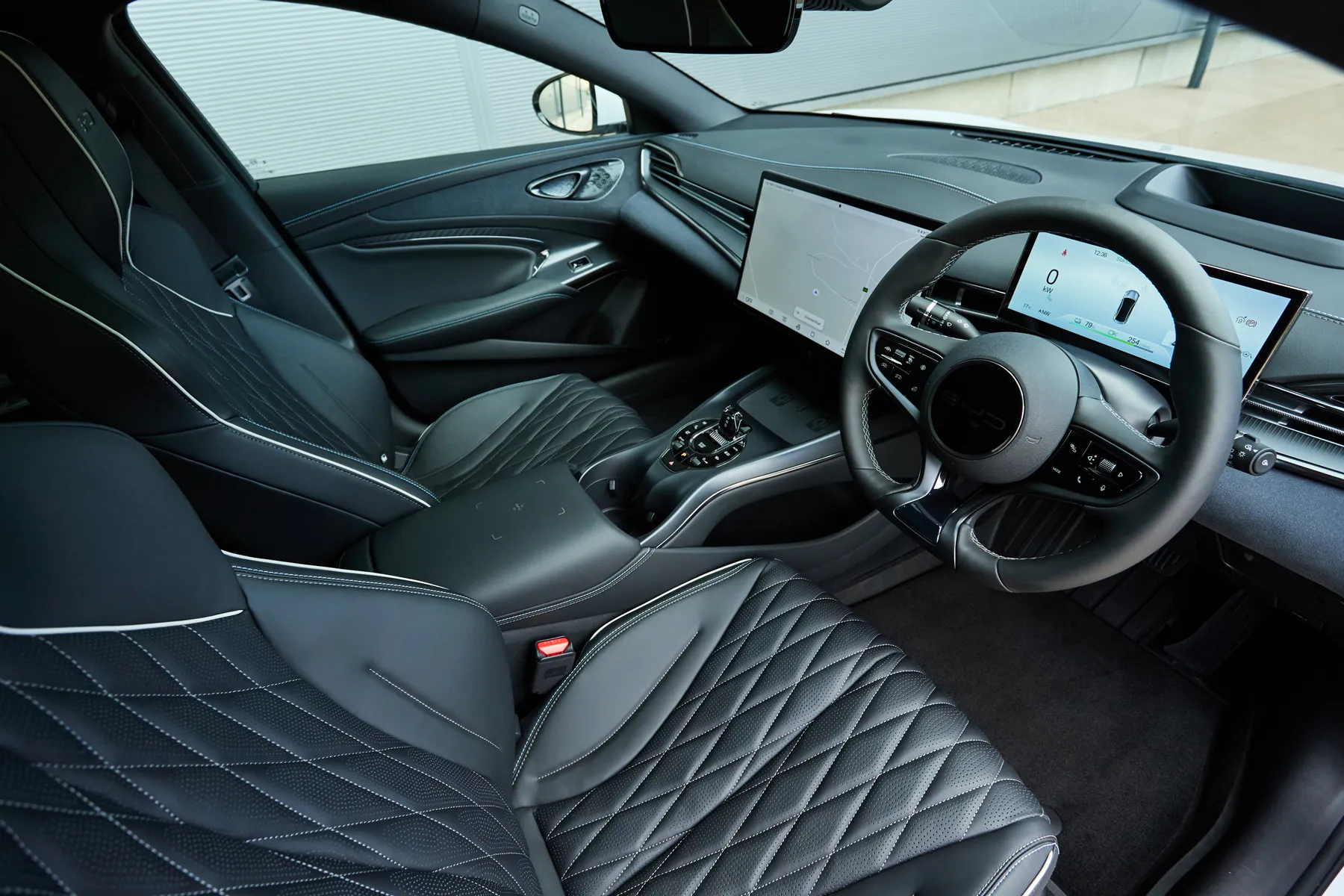
The official line is the interior is inspired by marine life, with a centre console that resembles a seal emerging from the sea. We can maybe see that, if we squint a little, but we'll certainly agree that the Seal's interior is a comfortable and premium place to spend time.
We found it very easy to get comfortable in the driver's seat, thanks to eight-way electric adjustment and a four-way adjustable steering wheel. There isn't any adjustable lumbar support in the Design model (you'll need the BYD Seal Excellence for that), but we found the seats to be supportive enough anyway.
There are a few quirks to the interior. On our test car, the indicator and wiper stalks were fitted the wrong way around - something we're assured will be fixed for production models. Pleasingly, the BYD Seal doesn't take an overly minimalistic approach to the cabin - there are some useful shortcut buttons on the centre console, although you'll have to delve into the infotainment if you wish to adjust the climate control.
Quality and finish
Interior quality is top notch. Unlike some competitors (even... no, especially those from more established brands), you don't get the impression that the Seal has been rushed into production, or that its development budget has been spent on things other than the cabin.
The doors close with a satisfying clunk, the materials are all exceptionally chosen and everything is attached together in a neat, well-finished manner. We didn't notice any rattles from our test cars and we have no doubt that the BYD Seal will stand the test of time.
Infotainment: Touchscreen, USB, nav and stereo in the BYD Seal
You do get the impression that the BYD Seal's designers have sat around a table and brainstormed how they can make their infotainment offering different from other electric cars. The result is a huge 15.6-inch infotainment screen that can be switched from portrait to landscape display at the touch of a button.
It's exactly the kind of thing a new owner will use a few times to show off to their friends before they forget about it for the rest of their ownership. We prefer it in landscape mode, but at least the option's there.
We'd like to spend a little longer with the BYD Seal before we deliver our full verdict on its infotainment system. It doesn't seem quite as user-friendly as some systems while the graphics aren't particularly bright, either. You'd probably get used to it with time, though, and it certainly seems to react to responses quickly enough. Apple CarPlay and Android Auto are standard, which means you can easily connect your phone and access your favourite apps on the move.
Space and practicality: BYD Seal boot space
Take a seat in the front of the BYD Seal and it actually feels like a very spacious family car. The panoramic sunroof (standard across the roof) adds to the airy vibe, while there's loads of adjustment in the seats so people of all shapes and sizes ought to get comfortable. There's a decent amount of room in the back, too - something BYD says is down to the Seal's 'blade' battery which robs less interior space than a conventional electric car battery pack.
The BYD Seal's boot offers room for up to 400 litres of luggage. That's a reasonable size, although access is pretty tight - the BMW i4's wide hatchback opening is more practical for moving bulky objects. There's room under the boot floor for storing cables, while there's also an extra 53 litres of stowage space in the 'frunk' under the bonnet.
The BYD Seal measures 4800mm long, 1875mm wide and 1460mm high.
Handling and ride quality: What is the BYD Seal like to drive?
"With quite a chunky amount of weight to carry around and a general focus on sportiness, you'd expect the BYD Seal to be uncomfortably firm. But it's not - its suspension copes exceptionally well with UK roads."
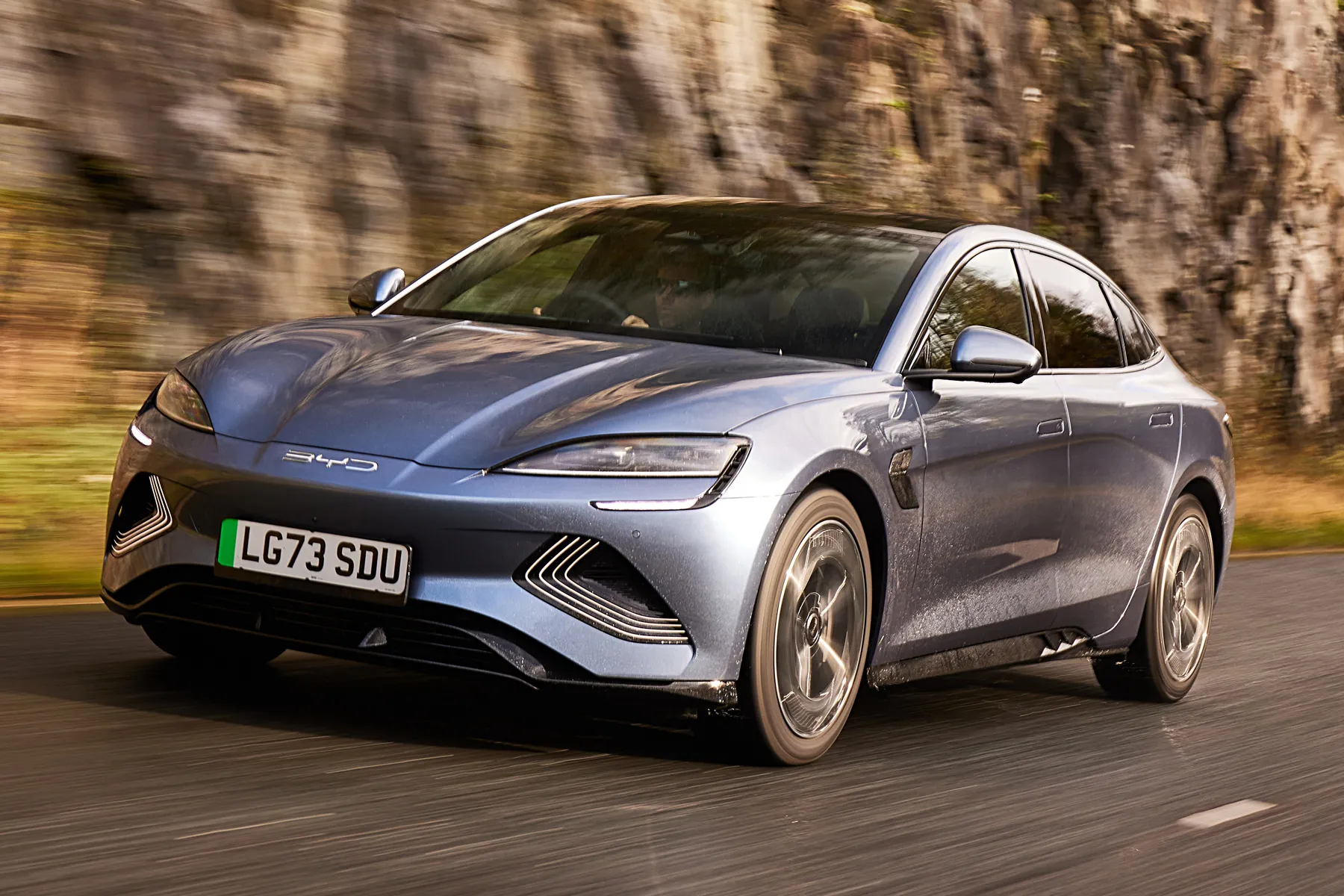
The BYD Seal's suspension setup depends on which model you go for - the more expensive BYD Seal Excellence comes with semi-adaptive dampers that are meant to be more reactive to bumps in the road. In truth, we found both models to be pleasantly comfortable without being excessively floaty.
It doesn't feel as sporty as a BMW i4, but we reckon there's more enjoyment to be had driving a BYD Seal than a Tesla Model 3. The steering is responsive and it remains flat during cornering, while both models have a reassuring amount of grip. We tried the all-wheel-drive car on a wet test track and it felt very safe in its responses.
The BYD Seal does feel like a big car, especially on narrow rural roads or around town. But visibility is generally pretty good, while features like the 360-degree camera (fitted as standard) help when negotiating tight parking spaces.
What motors and batteries are available in the BYD Seal?
From launch, the BYD Seal is offered with a single 82.5kWh battery pack. This is paired with a choice of two different drivetrains. The entry-level BYD Seal Design comes with a single electric motor driving the rear wheels, providing a power output of 313PS and 0-62mph acceleration figure of 5.9 seconds. That's pretty sprightly for an 'entry-level' electric car - it'll certainly feel quick enough for the majority of buyers.
If you want slightly more thrilling acceleration, the BYD Seal Excellence adds an extra electric motor on the front axle. That means it's four-wheel drive, with a total power output of 530PS. This has a 0-62mph time of 3.8 seconds - hence the slightly naff '3.8S' badge on the back of the car. You'll soon get bored of full-throttle acceleration runs in the dual-motor BYD Seal, although its rapid response is useful for overtaking manoeuvres.
Maximum electric range in the BYD Seal
The there are electric cars on sale with a longer range, the real-world range of the BYD Seal ought to be sufficient for a lot of drivers.
Both BYD Seals use the same 82.5kWh battery pack (a smaller battery might be offered at a later date), with the Design having an official WLTP range of up to 354 miles. The BYD Seal Excellence, with its higher power output, has a range of 323 miles.
These figures are intended to be indicative of what you could see rather than gospel, but we'd certainly expect to cover close to 300 miles before you need to charge the BYD Seal.
Refinement and noise levels
During our wet and windy test drive in the north of England, the BYD Seal kept us well isolated from the storm going on outside. Like a lot of electric cars, it's exceptionally relaxing to drive. There's no grumble from the engine, obviously, while we didn't notice a whine from the electric motor(s). Any wind noise is drowned out by the speakers, while there's only a slight thrum from the chunky alloy wheels.
Safety equipment: How safe is the BYD Seal?
You might think that this is one area in which the BYD Seal falls apart compared to more established (in the UK market) competitors. But not so - independent experts Euro NCAP have put it through their challenging crash tests and concluded that it's a very safe car. Safe enough to achieve a respectable five star rating (including impressive 89% and 87% scores of adult and child occupants respectively).
That impressive safety rating is partly down to the extensive list of safety and driver-assistance kit that's fitted as standard on both BYD Seal models. You name it, it's got it: forward collision warning, rear collision warning, automatic emergency braking, rear cross traffic alert, lane keep assistance... you get the idea.
Some of these features can feel a bit overzealous in the real world - the Hyundai Ioniq 6, for example, likes to beep at the slightest dip in driving standards, which gets a bit irritating. But BYD has listened to feedback and toned down some of the functions - so, while it's there to help prevent a collision, it's not overly intrusive.
Charging times: How much does it cost to charge the BYD Seal?
"Expect to pay around £25 to fully charge a BYD Seal at home. That works out at about 7p per mile, which is a lot cheaper than a premium petrol or diesel competitor."

Home charging is the easiest and cheapest way to charge any electric vehicle - just plug it in overnight and enjoy having a full charge in the morning. A full charge of the BYD Seal's 82.5kWh battery takes around 12 hours using a 7kW home charger.
If you can't charge a car at home (or want to give the Seal a quick charge on a longer journey), it can be topped up at a rate of up to 150kW. That's pretty quick, charging from 30% to 80% in just 26 minutes - although rivals including the Polestar 2 and Tesla Model 3 can be topped up quicker.
How reliable is a BYD Seal?
The BYD Seal is a bit of an unknown in terms of reliability. The brand hasn't been around for long in Europe, so we're yet to see how it performs in long-term ownership surveys.
That doesn't mean it's going to be flakier than an old Renault, though. Electric cars are usually very reliable (there's less to go wrong than in a petrol or diesel car), while BYD builds its own batteries and motors. Remember, BYD is a huge global player in the electric vehicle market - it's one of the biggest manufacturers of battery-powered buses, trucks and even forklift trucks, so it does have some experience in making dependable vehicles.
Insurance groups and costs
BYD Seal insurance groups are yet to be confirmed. It's worth shopping around for quotes - recent price hikes mean the Seal could cost quite a lot to insure, especially as a relatively rare electric car.
VED car tax: What is the annual road tax on a BYD Seal?
Nothing. Zero. Zilch. Nada. Like all electric cars, the BYD Seal doesn't cost anything to tax. That's set to change in 2025 but hey, enjoy the savings while you can.
How much should you be paying for a used BYD Seal?
"The BYD Seal is so new, you're not gonna be able to grab a used one on the secondhand market. If you want the latest thing, you're going to have to pay for it..."
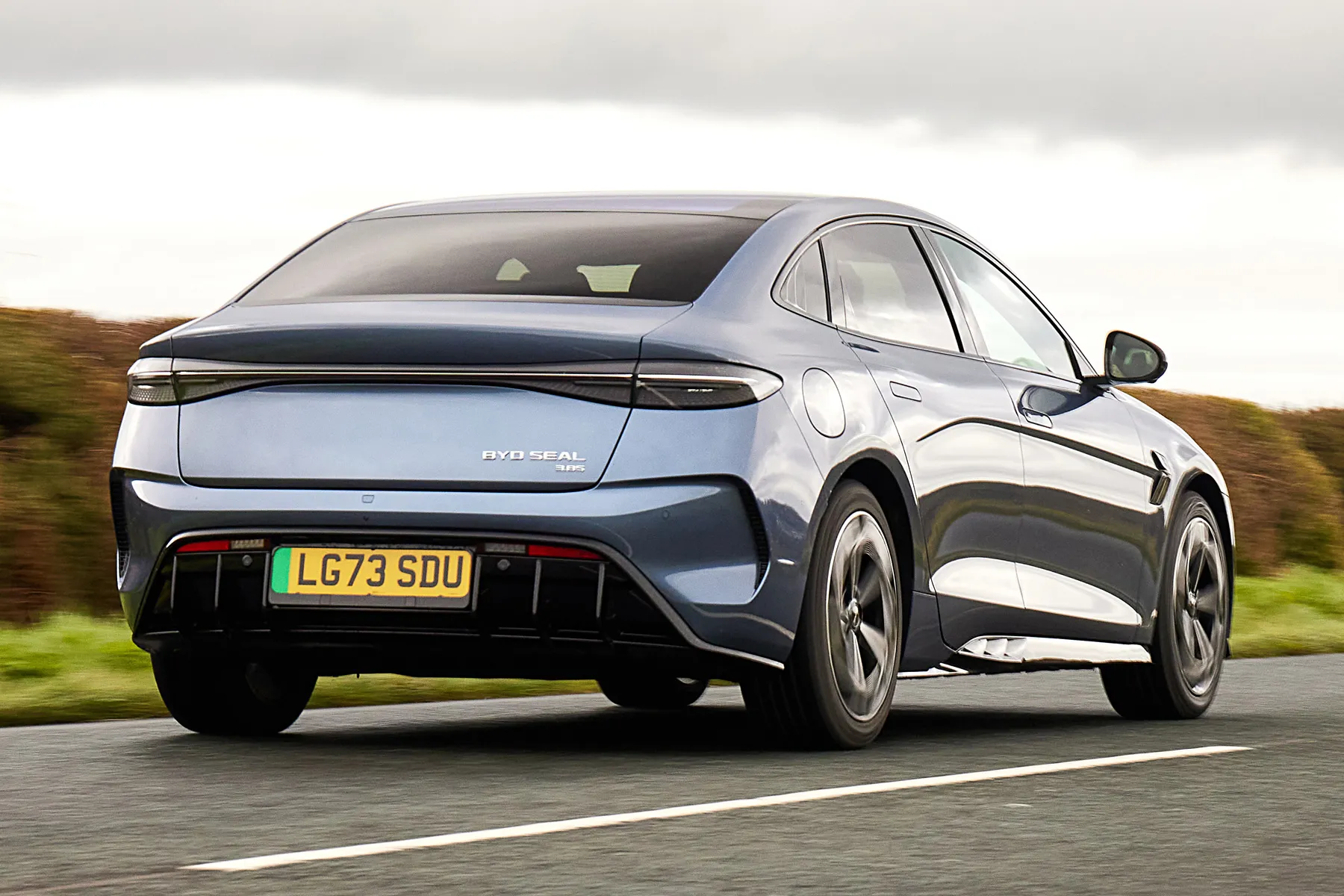
BYD Seal prices start from £45,695 for the entry-level Design trim, while the BYD Seal Excellence is £48,695.
We'd politely describe those prices as 'confident' - a brand new Tesla Model 3 can be picked up (this week) for around £40,000. But BYD isn't pitching the Seal as a budget electric car - it's proud to be premium, and you do at least get a lot of equipment for your money. Unlike competitors, there isn't a lengthy options list to raid.
The price walk of just £3,000 makes the top-spec BYD Seal Excellence seem like a no-brainer. But don't be too hasty - aside from a power hike, the Excellence trim doesn't add a great deal. We reckon the BYD Seal Design is probably the sweet spot in the range.
Trim levels and standard equipment
There are two trim levels available: the BYD Seal Design and the BYD Excellence. The biggest difference between the two is the BYD Excellence comes with an extra electric motor, providing extra power (and all-wheel drive). In terms of actual equipment, the two are very similar - you'll struggle to tell the difference between them, which makes the base-spec BYD Seal Design a very tempting choice.
Standard equipment on the BYD Seal Design includes a panoramic sunroof, electric tailgate, 19-inch alloy wheels, high-beam assist and metallic paint. Inside, the BYD Seal Design features a heated leather steering wheel, 10.25-inch digital instrument cluster, 15.6-inch rotating infotainment screen (with Apple CarPlay and Android Auto), wireless phone charging, leather seats (heated and ventilated in the front), ambient lighting and dual-zone air conditioning. A 360-degree camera is standard, as well as front/rear parking sensors, automatic vehicle hold, keyless entry/start and an electronic parking brake.
The BYD Seal Excellence adds a head-up display and semi-adaptive dampers. That's about it. Aside from the aforementioned extra performance.
There aren't any optional extras, either, apart from two premium colours (Shadow green and Indigo grey). Buyers get a choice of four standard colours and two interiors. This limited choice helps keep the ordering process simple and speeds up delivery times, says BYD.
Ask the heycar experts: common questions
What is a BYD Seal?
Is the BYD Seal on sale in the UK?
What is the actual range of the BYD Seal?
Get our latest advice, news and offers
Keep me updated by email with the latest advice, news and offers from heycar.
By submitting you agree to our privacy policy
